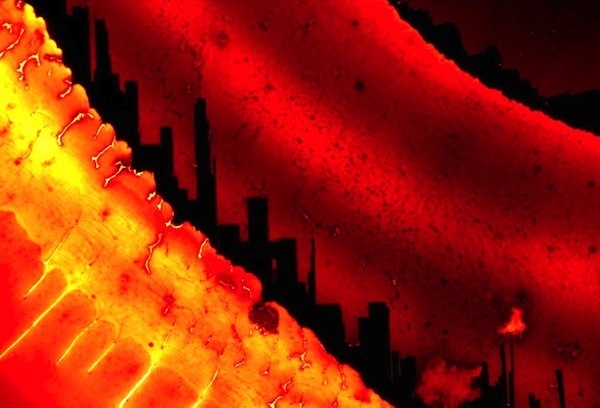Contest seeks another round of amazing science images

This image, from graduate students Thomas Ellingham and Max R. Salick, shows cellulose nano-fibers marked with a fluorescent stain, resembling a surreal, microscopic city skyline. It was one of the winners of last year’s Cool Science Image Contest. See all of last year’s honorees.
An array of new imaging techniques — from new forms of microscopy to novel telescopes, cameras and other imaging technologies — is illustrating science like never before. Stunning visuals offer glimpses into seen and unseen natural and technological worlds. Increasingly, such images are gaining aesthetic recognition as well.
To highlight the visual and scientific value of scientific imagery, the fifth annual Cool Science Image Contest is soliciting the best images from students and faculty and staff scientists on the University of Wisconsin–Madison campus.
Sponsored by Promega Corp. with support from DoIT Digital Publishing and Printing Services, the contest offers the university community an opportunity to show off compelling science images made by any currently enrolled student, or staff or faculty member. The first contest drew more than 60 entries and last year nearly 100 images were submitted by talented individuals. Winners and finalists are published on The Why Files, a popular science website that hosts the original Cool Science Image feature. Winning images are also showcased in a fall semester exhibit at the Mandelbaum and Albert Family Vision Gallery of the UW’s McPherson Eye Research Institute.
To enter images, obtain guidelines, submission requirements and a link to an entry form, visit the contest home page. The submission deadline is Friday, March 6.
Winners will be announced in mid- to late-March. Each winner will receive a $100 Downtown Madison gift certificate and winning images will be published on The Why Files. In addition, winners receive a poster-size print of their submitted image. All qualified entries will be displayed in a slide show at the 2015 Wisconsin Science Festival and during the exhibit at the McPherson Eye Research Institute.
Tags: recent sightings, research


